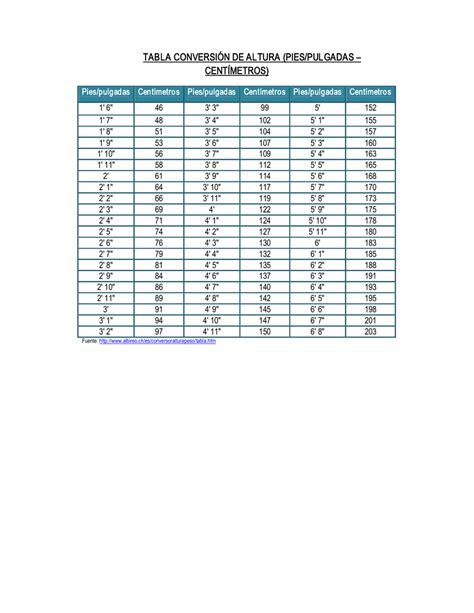5 Pies 6 Pulgadas En Centimetros
Kalali
Apr 07, 2025 · 4 min read

Table of Contents
5 Pies 6 Pulgadas en Centímetros: A Comprehensive Guide to Unit Conversion
Converting units of measurement can sometimes feel like navigating a maze. But understanding the process is crucial for various applications, from baking and crafting to construction and engineering. This detailed guide will walk you through the conversion of 5 feet 6 inches into centimeters, explaining the process step-by-step and providing valuable context for future unit conversions.
Understanding the Units:
Before diving into the calculation, let's clarify the units involved:
- Feet (ft): A unit of length in the imperial system, commonly used in the United States and a few other countries.
- Inches (in): A smaller unit of length in the imperial system, with 12 inches equaling 1 foot.
- Centimeters (cm): A unit of length in the metric system, based on the meter. The metric system is internationally preferred for its simplicity and ease of conversion.
The Conversion Process:
The key to converting 5 feet 6 inches to centimeters is to break down the process into manageable steps:
-
Convert feet to inches: Since 1 foot equals 12 inches, 5 feet is equal to 5 * 12 = 60 inches.
-
Combine inches: Now, add the 6 inches to the 60 inches obtained in step 1. This gives us a total of 60 + 6 = 66 inches.
-
Convert inches to centimeters: This is where the conversion factor comes in. 1 inch is approximately equal to 2.54 centimeters. Therefore, to convert 66 inches to centimeters, we multiply 66 by 2.54: 66 inches * 2.54 cm/inch = 167.64 centimeters.
Therefore, 5 feet 6 inches is equal to 167.64 centimeters.
Practical Applications and Examples:
Understanding unit conversion is essential in many real-world scenarios. Here are a few examples:
-
Clothing Sizes: Many international clothing brands use metric measurements (like centimeters) for their sizing charts. Knowing how to convert your height from feet and inches to centimeters can help you accurately determine your size when ordering online or shopping internationally.
-
Construction and Engineering: Accurate measurements are critical in construction and engineering projects. Converting between imperial and metric units is essential for ensuring compatibility and avoiding errors. For instance, if you're working with blueprints that use feet and inches, you might need to convert them to centimeters for accurate implementation.
-
Cooking and Baking: Recipes can sometimes list ingredients in different units. Knowing how to convert between units is important to ensure accurate measurements, particularly in baking where precise measurements are often crucial for successful results. A recipe might call for a specific diameter of a cake pan in inches which you might want to convert to centimeters if your measuring tools are in the metric system.
-
Travel: When traveling internationally, understanding unit conversions is important for navigating distances, understanding speed limits, and interpreting various measurements. You may need to convert miles to kilometers or inches to centimeters when making accommodations for baggage.
Expanding on Unit Conversion Concepts:
Let's delve deeper into the broader context of unit conversion and explore some related concepts:
-
Conversion Factors: Conversion factors are ratios that express the relationship between two units. For instance, the conversion factor between inches and centimeters is 2.54 cm/inch. Using conversion factors allows for systematic and accurate unit conversions. You can apply this same principle to many other unit conversions.
-
Dimensional Analysis: Dimensional analysis is a powerful tool that uses the units of measurements to check the validity of equations and calculations. By carefully tracking the units throughout the calculation, you can identify potential errors. This is especially useful in complex conversions that involve multiple steps.
-
Significant Figures: When dealing with measurements, it's essential to consider significant figures. Significant figures represent the precision of a measurement. In the conversion of 5 feet 6 inches to centimeters, we obtained 167.64 centimeters. However, the precision of the original measurement (5 feet 6 inches) may limit the number of significant figures we can confidently report in the final answer.
-
Approximations: While the conversion factor between inches and centimeters is approximately 2.54, more precise values exist. The choice of using an approximate value or a more precise value depends on the required level of accuracy in the specific application.
Further Exploration:
The conversion of 5 feet 6 inches to centimeters is just one example of a basic unit conversion. Many other conversions are possible, involving different units of length, weight, volume, temperature and others. The principles discussed here are widely applicable across different types of unit conversion. Mastering these concepts can significantly enhance problem-solving skills in various fields.
Conclusion:
Converting 5 feet 6 inches to centimeters is a straightforward process involving simple arithmetic and a known conversion factor. However, the underlying concepts of unit conversion extend far beyond this single example and have broad applications in many fields. Understanding these concepts, including conversion factors, dimensional analysis, significant figures, and the appropriate use of approximations, empowers you to tackle complex unit conversion problems with confidence and accuracy. By mastering these skills, you’ll find yourself better equipped to navigate situations requiring unit conversions, improving precision and preventing errors across a range of applications.
Latest Posts
Latest Posts
-
How Much Does A Cubic Meter Of Water Weigh
Apr 09, 2025
-
What Is The Lowest Common Multiple Of 10 And 12
Apr 09, 2025
-
What Is The True Solution To
Apr 09, 2025
-
Why You Cant Live In Jupiter
Apr 09, 2025
-
How Many Kilometers Is In 10 Miles
Apr 09, 2025
Related Post
Thank you for visiting our website which covers about 5 Pies 6 Pulgadas En Centimetros . We hope the information provided has been useful to you. Feel free to contact us if you have any questions or need further assistance. See you next time and don't miss to bookmark.